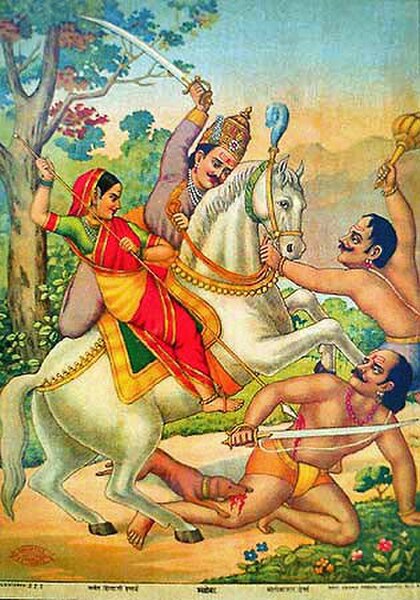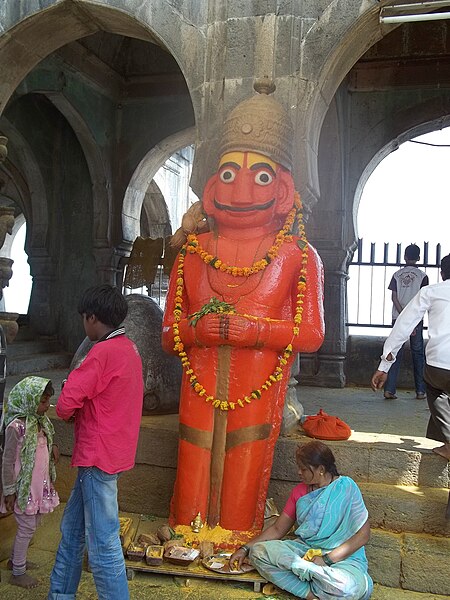The Khandoba Temple of Jejuri is a Hindu temple dedicated to the god Khandoba, located on a hill in the town of Jejuri, Maharashtra, India. It is one of the most prominent Hindu pilgrimage centres of Maharashtra.
Khandoba Mandir of Jejuri
Jejuri village in foreground and Khandoba mandir on the hill in background at Jejuri, somewhere between 1855 and 1862
Side view of this temple
Deepstambha at Khandoba Mandir, Jejuri
Khandoba, also known as Martanda Bhairava,, Malhari and Malhar, is a Hindu deity worshiped as a manifestation of Shiva mainly in the Deccan plateau of India, especially in the state of Maharashtra and North Karnataka. He is the most popular Kuladevata in Maharashtra. He is also the patron deity of some warrior, farming castes, 96 kulin kshatriya marathas,shepherd community and Brahmin (priestly) castes as well as several of the hunter/gatherer tribes that are native to the hills and forests of this region. The sect of Khandoba has linkages with Hindu and Jain traditions, and also assimilates all communities irrespective of caste, including Muslims. The form of Khandoba developed during the 9th and 10th centuries from a folk deity into a composite god possessing the attributes of Shiva, Bhairava, Surya and Kartikeya (Skanda). He is depicted either in the form of a linga, or as an image of a warrior riding on a bull or a horse. The foremost centre of Khandoba worship is the temple of Jejuri in Maharashtra. The legends of Khandoba, found in the text Malhari Mahatmya and also narrated in folk songs, revolve around his victory over demons Mani-malla and his marriages.

Khandoba and Mhalsa killing demons Mani-Malla — a popular oleograph, c.1880.
The sanctum of Khandoba's older temple Kadepathar, Jejuri. Khandoba is worshipped in three forms: stone icon with the consorts (top), metal icon with Mhalsa (mid, covered with garlands) and two lingas, symbolizing him and Mhalsa.
Mani is seen worshipped in the Jejuri temple of Khandoba
Khandoba with his two chief wives: Mhalsa and Banai.








